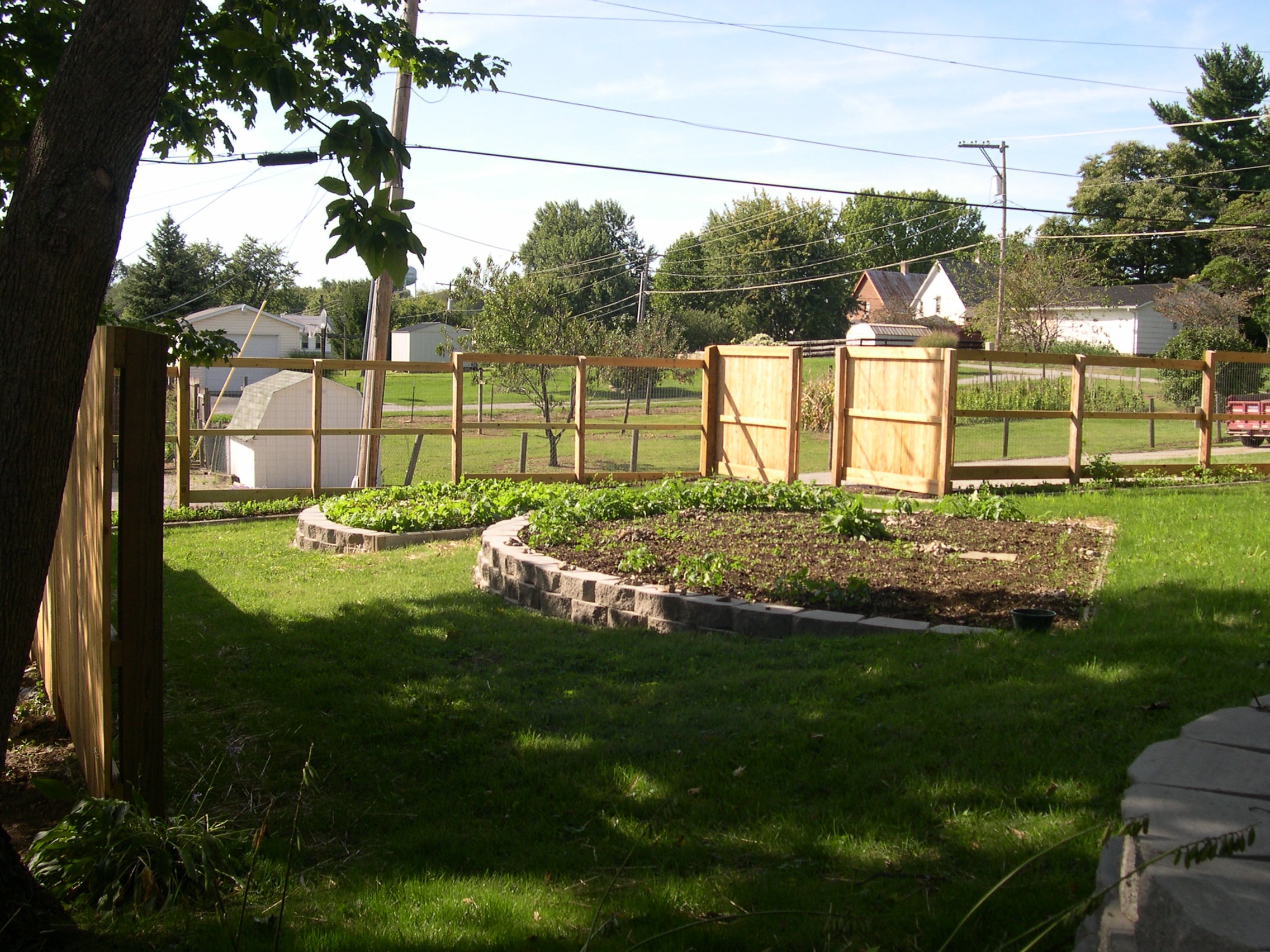
Raised-bed gardening is the key to growing lots of healthy plants with the least effort.
Raised beds are containers of soil above ground level, with space to walk around them without packing the growing soil down and squeezing out all the air.
They also prevent the surrounding grass and weeds from invading and competing with the garden plants. Gardening in raised beds takes less space, less effort and less time.
Most gardeners in southern Ohio struggle with hard clay soil, making it difficult to grow nice vegetables. It’s rare to find a row-crop vegetable garden with loose, rich, well-drained and healthy soil. Raised beds help with the compaction problem since you never walk on the planting soil.
So, what’s the best soil to fill your raised beds with? That depends on what you’re planning to grow, but here are a few basic rules.
First, raised bed soil should be very light and fluffy. Plants breathe through their roots, so air is the secret ingredient of healthy garden soil. Heavy soils expand when they freeze, which will tear your raised beds apart over time. Light, fluffy soils in raised beds drain quickly, so plants won’t drown.
Commercial growers never use topsoil or dirt; they prefer “soil-less” growing mixes made from sterile ingredients like well-composted sawdust, peat moss, vermiculite, perlite and mushroom compost. These soils have the ideal texture for plant roots, won’t swell when frozen and won’t pack down.
Different plants need different soils. Acid-loving plants like strawberries, blueberries and raspberries like acid soils, so raised beds for growing them should be filled with shredded pine bark, peat moss, well-composted manure and Holly-Tone fertilizer. Holly-Tone is an old-fashioned, meal-based ground fertilizer rich with trace minerals and soil microbes.
Vegetables do best in a rich mix of composted manure and well-composted sawdust, with perhaps some course sand added for texture.
Each vegetable has its preferred plant food, but you can’t go wrong mixing in a good organic fertilizer like Espoma Garden-Tone when you first prepare the soil for planting. Fertilizers that are high in nitrogen are good for leafy crops, but fruits and root crops do better with less nitrogen but more potassium and phosphorus. The important thing is that mixing plant foods into the soil is better than spreading them on top.
Good planting soils have lots of organic matter like compost and peat moss. These ingredients keep the soil loose so it can breathe and drain and roots can spread easily.
Compost also contains hundreds of valuable trace minerals and live organisms like soil microbes and earthworms. These ingredients help plants digest their food, and prevent diseases caused by malnutrition. No amount of concentrated fertilizers like Miracle-Gro or 12-12-12 can replace the natural goodness of rich compost.
There aren’t many things you can do as effective, easy and cheap as adding bulk mushroom compost to your garden soil. A byproduct of mushroom farming, this wonderful, dark, rich mixture has a magic effect on your vegetable garden. It is a quick, sure-fire way to boost the performance of almost everything you grow.
Costing only a few cents per pound, mushroom compost is an organic blend of wheat straw, peat moss, cottonseed meal, cottonseed hulls, corncobs, cocoa bean shells, gypsum, lime, chicken litter and/or horse stable bedding. Genuine mushroom compost is completely sterile, so unlike most compost, it won’t add weed seeds to your garden. It is much too rich to plant into it directly, but mixed with other ingredients, it is a magic booster for flowers, vegetables and even lawns.
Here’s where many raised bed gardeners go off-track. Mixing any kind of dirt, whether it be “topsoil” or clay, will make the soil in your raised beds eventually pack down into a brick.
The word topsoil can mean many different things, because no two topsoils are exactly the same. Topsoil in farm fields has been turned over, mixed, and very often exhausted by repeated crops. Topsoil is heavy. Topsoil often contains clay. It also contains weed seeds, soil bacteria and funguses.
Smart gardeners avoid adding anything that might contain weed seeds. Weeding is the most tedious drudgery in gardening, so why plant weeds in your fancy raised beds? Manure can introduce pasture weeds into your garden unless it’s scientifically composted. Soil-less mixes are sterile, either from high-heat composting or because, like peat moss and vermiculite, they come from deep underground.
Does all this mean you have to buy expensive bagged container mixes for raised bed gardening? Not really. Good nurseries offer pre-mixed, weed-free raised bed soils in bulk, or all the ingredients to mix your own. Call us at GoodSeed Nursery if you’re having trouble finding bulk soils. Whatever your mixture, it should be fluffy enough to drain well and stay loose. In future years you can just add a few inches to the top at planting time.
If you’ve invested in raised beds, make sure you fill them with soil that will make your plants thrive. Good soil is the key to raised bed gardening. If you take care not to pack it down, plant roots will rapidly fill it and you’ll have the best garden you’ve ever had.
ID, 'source', true); $sourcelink = get_post_meta($post->ID, 'sourcelink', true); $sourcestring = '' . __('SOURCE','gabfire') . ''; if ($sourcelink != '') { echo "
$sourcestring: $source
"; } elseif ($source != '') { echo "$sourcestring: $source
"; } // Display pagination $args = array( 'before' => '' . __('Pages:','gabfire'), 'after' => '
', 'link_before' => '', 'link_after' => '', 'next_or_number' => 'number', 'nextpagelink' => __('Next page', 'gabfire'), 'previouspagelink' => __('Previous page', 'gabfire'), 'pagelink' => '%', 'echo' => 1 ); wp_link_pages($args); // Display edit post link to site admin edit_post_link(__('Edit','gabfire'),'','
'); // Post Widget gab_dynamic_sidebar('PostWidget'); ?>